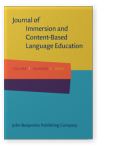Vol. 7:1 (2019) ► pp.88–114
Vol. 7:1 (2019) ► pp.88–114
Crossing over
Professional development opportunities with preservice teachers and public school students in dual-language classrooms
This study analyzes a professional development intervention for preservice teachers that integrates language-acquisition strategies and academic content. The intervention is based on the Guided Language Acquisition Design (Project GLAD) and an elementary school’s science curriculum (FOSS), which included elements of effective professional development: active learning, models of effective practice, a focus on content, job-embeddedness, and reflection.
The Teaching English to Speakers of Other Languages (TESOL) and Bilingual Education-certified preservice teachers found that scaffolding context-reduced and cognitively-demanding lessons were foundational for content and language learning. Helping to plan lessons, creating lesson materials, and implementing them with third-grade dual-language students were key to the preservice teachers’ pedagogical content knowledge of integrating language and content. This study illustrates how situated learning experiences are beneficial for preservice teachers to orchestrate effective integration of language and content instruction for students in dual-language classrooms.
Article outline
- 1.Introduction
- 2.Theoretical framework
- 2.1Theories of language integration and content instruction
- 2.2The Guided Language Acquisition Design (GLAD) model
- 2.3Content instruction and teaching
- 2.4Science instruction
- 2.5Teachers’ professional development
- Active learning
- Models of effective practice
- Emphasizing content
- Job-embedded professional development
- Feedback and reflection
- Collaboration
- Coaching
- 3.Research questions, design, and intervention
- 3.1Participants and context
- 3.2The science and language intervention
- 3.3An overview of the professional development workshop
- 4.Findings
- 4.1The preservice teachers’ prior knowledge of language and content
- 4.2The preservice teachers’ post-workshop knowledge of language and content
- 4.2.1Active learning in a classroom context
- 4.2.2Effective language and content practices
- Incorporating visuals
- Extending language and content learning
- Assessing student language
- 4.2.3The preservice teachers’ content knowledge
- 4.2.4The relationship between the curriculum and students’ engagement
- 4.3Science instruction in action
- Evaporation experiment
- Condensation experiment
- Precipitation experiment
- Temperature experiment
- Students report back to the class
- 5.Discussion
- 6.Implications and conclusion
- Note
-
References
